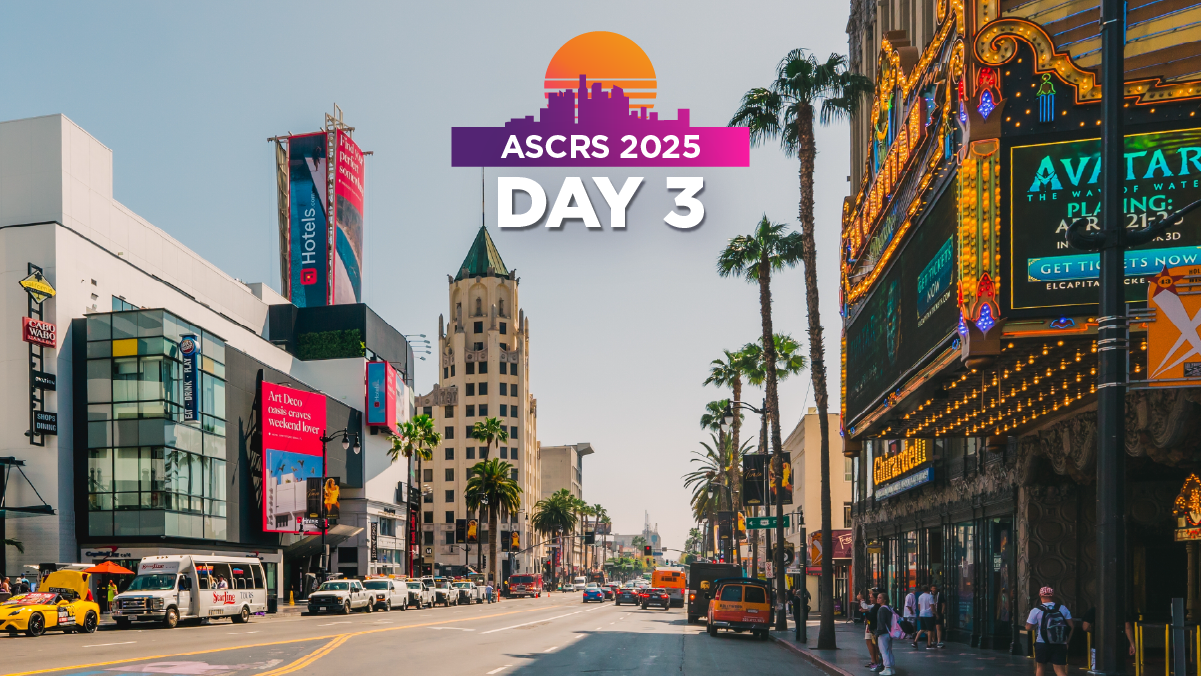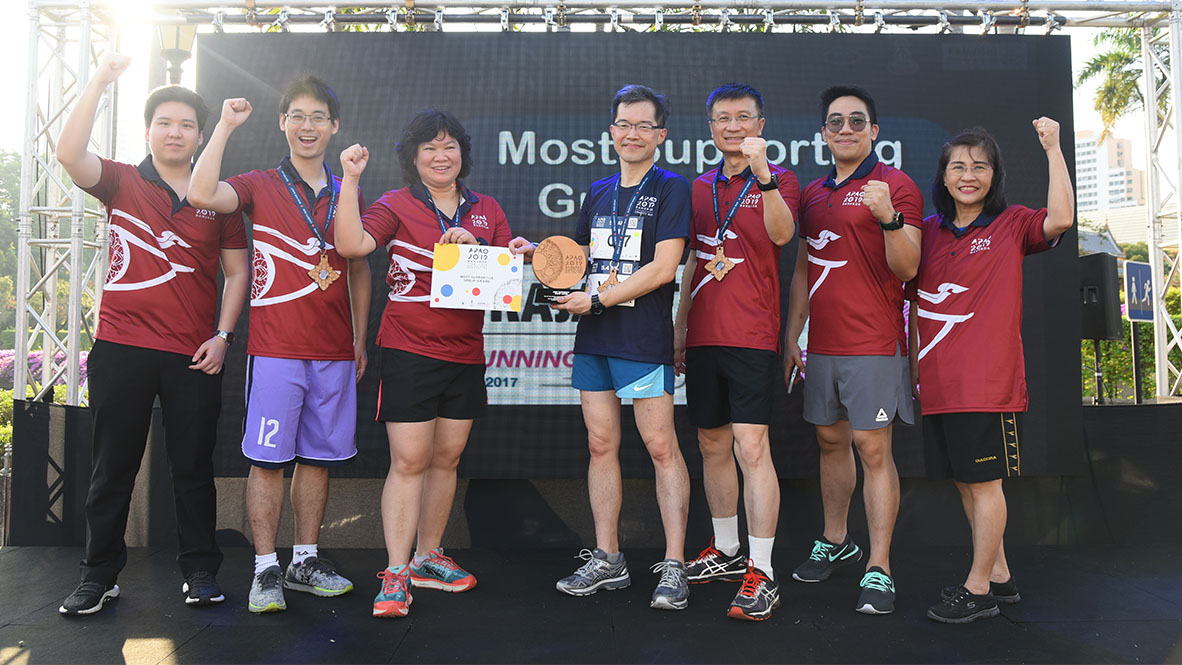From surgical pearls to future tech (and a Hollywood cameo), ASCRS 2025 wrapped with buzz, brains and bold ideas.
By Sunday, the buzz at the Los Angeles Convention Center had mellowed into a quieter hum as Day 3 of the American Society of Cataract and Refractive Surgery 2025 Annual Meeting (ASCRS 2025) unfolded. Delegates with roller bags in tow squeezed in a few more sessions before dashing off to the airport, determined to catch one last pearl of wisdom before heading home.
The crowds may have thinned compared to Saturday’s peak, but the educational energy stayed strong. With sessions covering surgical crossover strategies, industry innovations and lively conversations across visual disciplines, ASCRS kept the momentum going right until the final bell.
Day 3 sessions
One of Sunday’s highlights was the cataract crossover symposium, a goldmine for surgeons managing cataracts alongside other tricky ocular conditions.
Speakers tackled the challenges of cataract surgery when patients also present with lid abnormalities, retinal disease, glaucoma, neuro-ophthalmic issues or corneal disorders. From pre-op planning to post-op management, the focus was on delivering real-world pearls, especially around imaging, lens selection and adjusting surgical techniques for complex cases.
READ MORE: ASCRS 2025: The Ultimate Cataract Crossover Playbook You Can’t Miss
In the afternoon, the Journal of Cataract and Refractive Surgery (JCRS) Symposium offered a perfect mix of awards celebration and spirited debate.
After recognizing this year’s JCRS article award winners, the conversation jumped into hot topics like AI in surgical planning, competing strategies for hyperopia correction and best practices for handling posterior polar cataracts.
A particularly lively debate broke out over imaging for posterior polar cataracts, with Dr. Abhay Vasavada emphasizing the value of good old-fashioned clinical skills.
“It’s nice to have documentation. It’s nice to impress the audience. But really, what we are interested in is a basic, good clinical examination,” he said.
From AI’s growing role in predicting outcomes to the ongoing battle between femtosecond LASIK and KLEx for hyperopia, it was clear: innovation in anterior segment surgery is alive and kicking, fueled by data, dialogue and a commitment to better patient care.
READ MORE: Controversy Meets Creativity: JCRS Experts Challenge Anterior Segment Status Quo
The Main Stage on Sunday served up a fitting finale with a deep dive into the science behind corneal disease and a sharp reminder that advocacy is now part of the ophthalmologist’s job description, too.
Dr. Reza Dana, this year’s Richard L. Lindstrom Medal recipient, challenged traditional thinking about corneal pathology. His keynote revealed that neuropathy and inflammation don’t just coexist; they collude, creating a vicious cycle that accelerates ocular surface disease.
And in a fascinating twist, he also connected corneal endothelial cell loss to surface inflammation through the melanocortin pathway—an insight that could shape future treatments for conditions like Fuchs’ dystrophy.
Then came a gear shift with Dr. William Flanary (a.k.a. Dr. Glaucomflecken) taking the stage to spotlight the growing need for physician advocacy. Mixing comedy with a call to action, he argued that in today’s healthcare system, being a great doctor isn’t enough. You also need to fight for systemic change.
From TikTok fame to Capitol Hill visits, Dr. Flanary urged his colleagues to get involved, stay loud and never underestimate the power of a well-timed joke to spark real-world impact.
READ MORE: Nerves, Jokes and the Future of Advocacy in Ophthalmology: Sunday on ASCRS 2025’s Main Stage
When Hollywood meets ophthalmology
One of the day’s most unique moments happened not in a lecture hall, but at the ZEISS booth, where famed cinematographer Jon Joffin—of The X-Files and The Snow Walker fame—shared his perspective on optics, creativity and precision.
Jon Joffin, a longtime fan of ZEISS lenses, explained what sets them apart. “ZEISS lenses have this gentle sharpness to them… I like the way they render color, and I like the way they render skin tones,” he told the crowd.
He also touched on the universal need for reliability, whether you’re behind a camera or a surgical microscope. “Reliability… for me, relates to confidence. If I know something’s reliable, and I can be really confident in what I’m doing, that’s the reason…I can do my work really well.”
And when asked about AI’s growing presence in creative fields, Jon Joffin struck a chord familiar to many surgeons. “What I would hope for is that there’s still a humanity that we can offer, that machines don’t offer,” he said.
In a touching moment, he humbly tipped his hat to the medical professionals in the room, noting, “I honestly think what you guys are all doing is way more important than what I do. I mean, it’s candy and it’s entertainment and it makes you happy, but really, you guys are doing the real work.”
Alcon makes waves with UNITY VCS and CS
Meanwhile, the industry floor kept things exciting, with Alcon generating plenty of buzz around its new UNITY Vitreoretinal Cataract System (VCS) and UNITY Cataract System (CS).
The UNITY platform introduces some serious upgrades, including the HYPERVIT 30K—reportedly the world’s fastest vitrectomy probe at a whopping 30,000 cuts per minute—and UNITY Intelligent Fluidics for real-time pressure and flow control.
The cataract side of the platform also impressed, featuring UNITY Intelligent Sentry (which Alcon says reduces post-occlusion surge volumes by 44%) and UNITY Thermal Sentry, the first phaco handpiece equipped with a thermal sensor to monitor incision temperature.
Alcon announced that the systems will begin shipping in May 2025 to Australia, Europe, Japan and the United States, with more markets to follow later in the year pending regulatory approvals.
READ MORE: Alcon Rolls Out UNITY VCS and CS Systems for Cataract and Vitreoretinal Surgery
As attendees zipped up their bags and grabbed their boarding passes, one thing was clear: ASCRS 2025 lived up to the hype. Between the cutting-edge education, game-changing tech and unexpected Hollywood connections, the meeting showed once again why it’s a can’t-miss event for anterior segment specialists.
Armed with fresh strategies for complex cataract cases and a glimpse at the next generation of surgical systems, delegates left Los Angeles ready to take their practices to the next level.
READ MORE: Get the latest updates from ASCRS 2025 with our daily coverage here!
Editor’s Note: Reporting for this story took place during the annual meeting of the American Society of Cataract and Refractive Surgery (ASCRS 2025) being held from 25-28 April in Los Angeles, California, United States.



